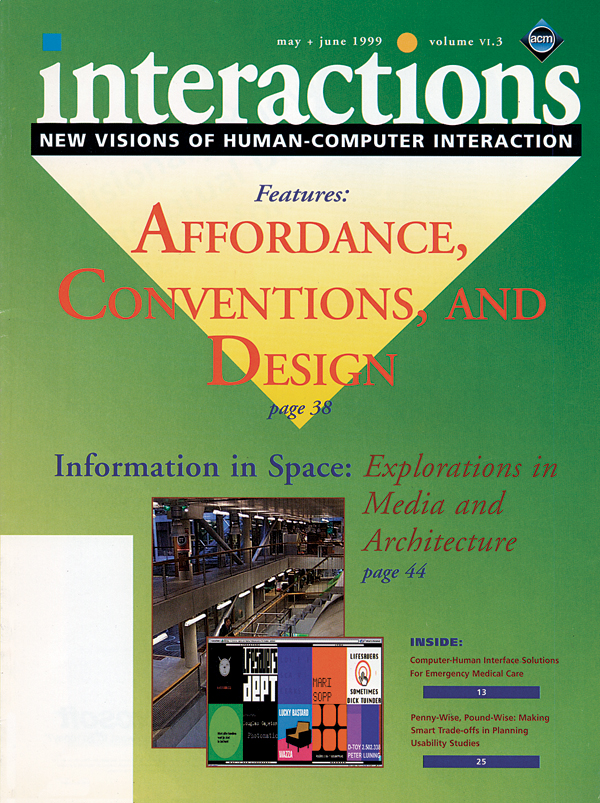Authors:
Jennifer Bruer
Manual and Cognitive Benefits of Two-Handed Input: An Experimental Study Bill Buxton Chief Scientist, Alias|Wavefront, Inc. Shumin Zhai IBM Almaden Research Center Andrea Leganchuk Cognos Inc. Stretchy widgets, such as rubber-band lines, have been a part of GUIs for over a decade. But, with only a few notable exceptions, such as Krueger (1983), all of these stretchy widgets are "nailed down" at one end. Consequently, the way that we interact with rubber-band lines, for example, resembles how we interact with a catapult in the physical world, rather than how we typically manipulate an elastic band. Bearing this in mind,…
You must be a member of SIGCHI, a subscriber to ACM's Digital Library, or an interactions subscriber to read the full text of this article.
GET ACCESS
Join ACM SIGCHIIn addition to all of the professional benefits of being a SIGCHI member, members get full access to interactions online content and receive the print version of the magazine bimonthly.
Subscribe to the ACM Digital Library
Get access to all interactions content online and the entire archive of ACM publications dating back to 1954. (Please check with your institution to see if it already has a subscription.)
Subscribe to interactions
Get full access to interactions online content and receive the print version of the magazine bimonthly.







Post Comment
No Comments Found